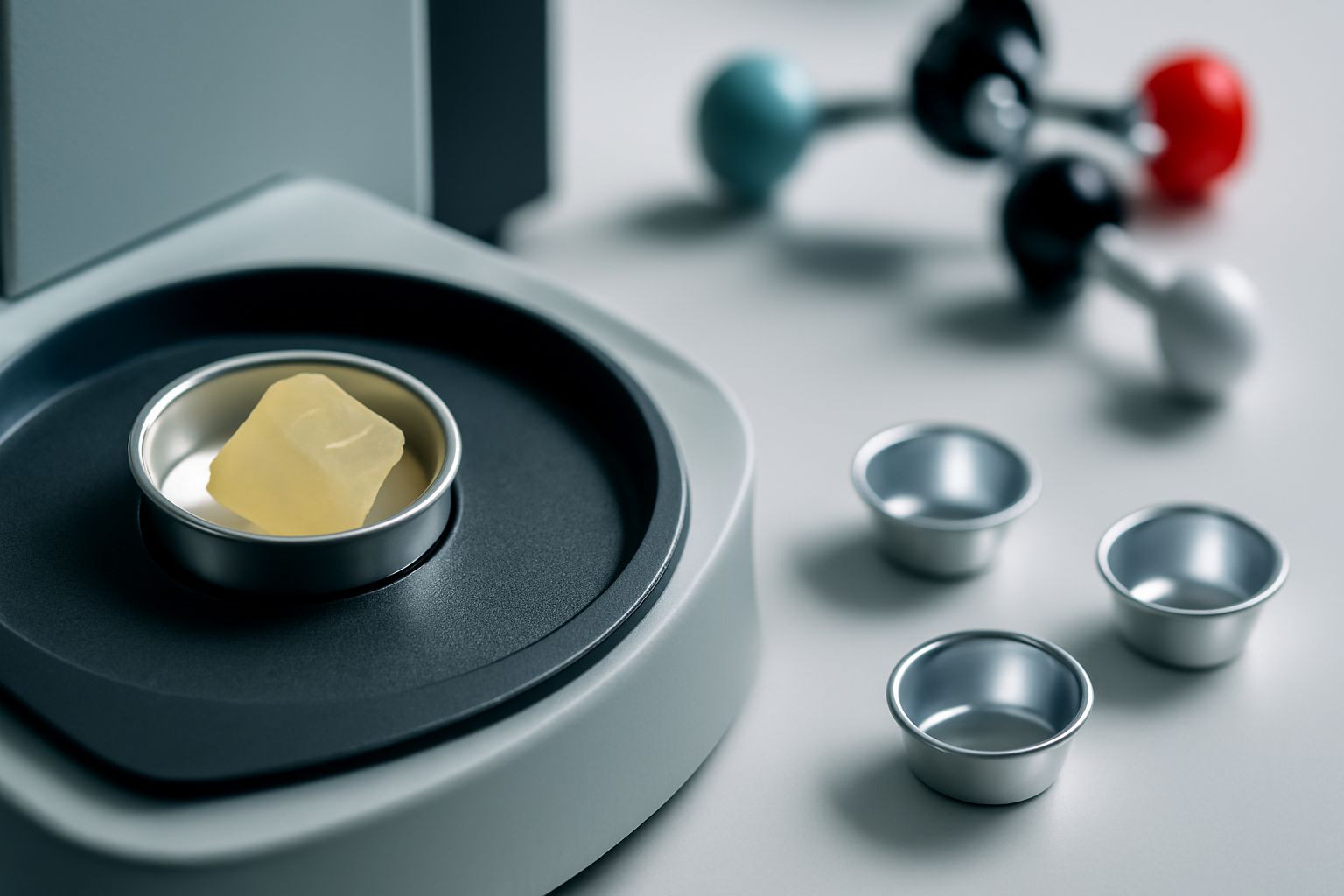Your cart is empty.
shop now
Your cart is empty.
shop now
Polymer testing can be full of surprises. Unreliable sample pans lead to errors, wasted time, or results that cannot be trusted.
Aluminum DSC crucibles solve problems in polymer research by giving precise thermal measurement. Their high thermal conductivity, resistance to contamination, and ability to handle high temperatures help produce accurate, repeatable results in polymer analysis.

Many labs use these crucibles every day to understand melting, glass transitions, and crystallization in polymers. When you want reliable results, the right sample pan choice is one detail you cannot ignore.
If a lab chooses the wrong sample pan, simple tests become unreliable and hard to repeat. Unsuitable pans can hold heat poorly or react with samples.
Aluminum DSC crucibles are essential for polymer testing because they offer uniform heat transfer, resist contamination, and prevent chemical reactions, supporting correct melting or thermal transition readings in polymer samples.
| Property | Why It Matters | Benefit for Polymers |
|---|---|---|
| Thermal Conductivity | Ensures even heat to the sample (see details) | Stable detection of melting points |
| Inert Surface | Does not react with most polymers | Makes results repeatable |
| High Purity Aluminum | Lowers risk of contamination | Keeps polymer data clean |
| Consistent Shape & Size | Better fit for instrument holders | Reduces baseline shifts |
| Temperature Resistance | Survives up to ~600°C | Suitable for most physical polymer tests (see polymer characterization) |
Over the years, I found that using pans made for other materials always caused more lost time. It is not worth putting a polymer sample in a pan that is not confirmed for DSC. Many peer-reviewed papers in polymer science also mention the use of aluminum DSC crucibles as the default for accurate data. Good pans mean fewer headaches and repeatable, trustable results.
It can be hard to spot small thermal events in polymers. Many crucibles do not transfer heat well or can miss short transitions during testing.
Aluminum DSC crucibles provide fast, even heating and cooling, which makes it easier to spot temperature changes like melting, crystallization, or glass transition on complex polymer samples.
| Factor | Description | Impact on Test Quality |
|---|---|---|
| Quick Heat Response | Transfers set device temperature to sample without delay | Sharper peaks, clear event separation |
| Even Temperature Field | Whole sample surface heats equally (DSC principle) | Removes baseline noise |
| Reduced Sample Degradation | Low risk of overheating or burning sample edge | Better measurement of glass transition (Tg) |
| Stable Sealing | Helps control sample atmosphere | Consistent test curve shape every run |
As I handle daily tests, I see that sealed aluminum crucibles help keep oxygen and moisture out. Learning from industry standards, even groups like the ASTM advise the use of pans with reliable cover designs for temperature studies. A good pan makes the smallest temperature difference visible, and unlocks details critical for new polymer product design or R&D.
Polymers come in many forms and sizes. Standard sample pans are not always perfect for special methods or unusual materials.
Custom aluminum DSC crucibles help researchers by matching unique polymer sample shapes, volumes, or atmospheres, letting them explore new conditions or improve testing on challenging samples.
| Customization Option | How It Helps | Polymer Use Case Example |
|---|---|---|
| Precise Volume Size | Reduces headspace, improves sensitivity | Testing low-mass films or powders |
| Special Sealing Types | Allows for inert or vacuum conditions | Studying polymers sensitive to air |
| Unique Shapes | Fits non-standard holders or bulky samples | Thick composite or pre-shaped pellets |
| Material Purity Choices | Matches specific contamination standards (learn more) | Medical grade or electronics R&D |
Sometimes a customer comes with a diagram or photos of an unusual test project. Having the option to order a custom design, like a deeper pan or one that can hold a liquid, makes projects move forward faster. In big projects, custom sample pans allow for direct comparison between batches or between old and new polymer grades, helping avoid mix-ups and showing the real performance of each product.
Small details can make or break a good lab result. Inconsistent crucibles add noise and make it hard to trust curve data.
Aluminum DSC crucibles improve results by supporting faster heat flow, cleaner baselines, and better repeatability. These advantages help scientists get more reliable, publishable data from their polymer tests.
| Feature | Role in Analysis | Result for User |
|---|---|---|
| Uniform Wall Thickness | Prevents uneven heating | Clearer transition points |
| Low Mass | Minimizes thermal lag | Faster cycle times |
| Compatible Lids | Reduces evaporation or loss (sample handling) | Higher accuracy in volatile samples |
| Simple Identification | Easy to track test samples | Fewer labeling errors |
There was a time my results looked noisy, only to find the problem was the batch of pans. Switching to high-grade aluminum crucibles fixed baseline drift and gave me results I felt proud to show colleagues. Many published research articles also note the importance of verifying pan materials. It is these basic but critical improvements that make the biggest difference in modern polymer science.